All products featured are independently chosen by us. However, SoundGuys may receive a commission on orders placed through its retail links. See our ethics statement.
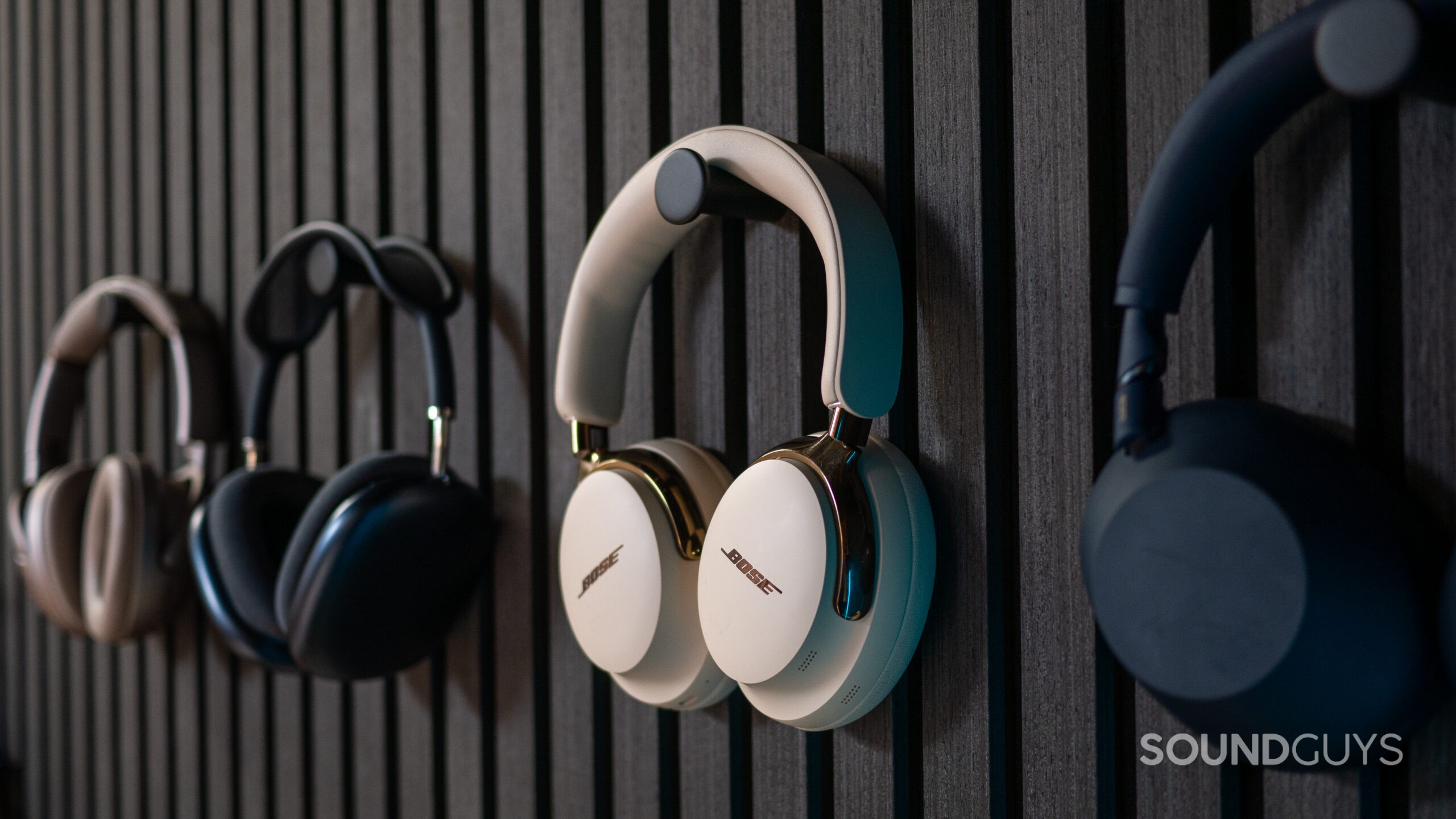

Bose QuietComfort Ultra Headphones (2nd Gen) review: Boring refresh or notable upgrade?
October 1, 2025


Bose QuietComfort Ultra Headphones (2nd Gen)
For decades, most people think “Bose” when the topic of active noise canceling (ANC) headphones comes up, with only a few competitors. However, in recent years there have been so many new entrants into the space that it’s tough to stand out. So how is Bose hoping to capture your dollar with a Bose QuietComfort Ultra with a fresh coat of paint? Let’s kick off this Bose QuietComfort Ultra Headphones (2nd Gen.) review.
The Bose QuietComfort Ultra Headphones (2nd Gen.) is for deep-pocketed Android users with an allergy to complications and a need for strong ANC.
This article was published on October 1, 2025, and this is the first version of the article. Updates will follow as the market changes.
What’s it like to use the Bose QuietComfort Ultra Headphones (2nd Gen.)?
The Bose QuietComfort Ultra Headphones (2nd Gen.) is a rather comfortable set of over-ear, ANC headphones, with angled drivers, a sliding band, and ample padding. The construction is largely plastic with thin metal casing, but it seems durable enough to withstand daily life. Though usually plastic isn’t the best choice of material, it does make the headphones mercifully light in comparison to other models, so it’s a positive when you’re talking about large items you intend to plunk onto your head for hours at a time. This model does not have any sort of ingress protection rating, so be careful when wandering off into the rain or snow.
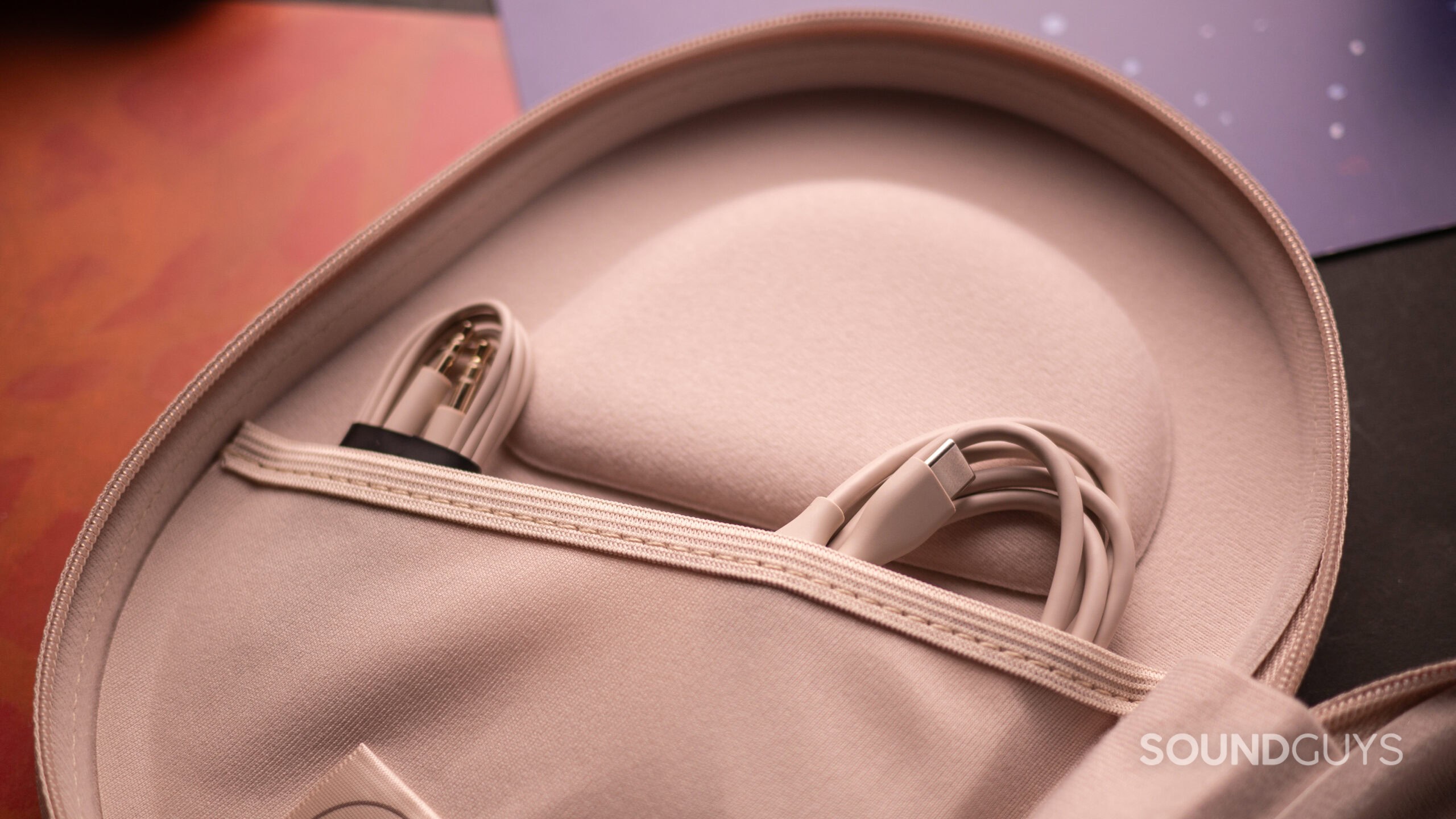
Using the headphones for long periods of time, the main comfort issues I can list are only heat buildup and ears touching the inside of the padding. The former is just a fact of life in the summer, but the latter can be solved by not resembling Alfred E. Neuman. Most people should be okay. Once you take the headphones off, laying the earcups flat on a table or the included travel case will automatically pause your playback. You can also turn the headphones off by holding the power button down shortly, but not too long — as the power button also doubles as the Bluetooth pairing button.
On the left earcup’s bottom is the USB-C in and analog in ports, while the controls are located on the right earcup. Though controls are a bit limited, anyone addicted to their smartphone will likely not be relying on the headphones to control their music all that often anyway. Since the Bose QuietComfort Ultra Headphones (2nd Gen.) is most likely to be used in commutes, long trips, and other travel where the world around you is noisy, it’s not a bad assumption that you’ll be glued to your phone anyway.
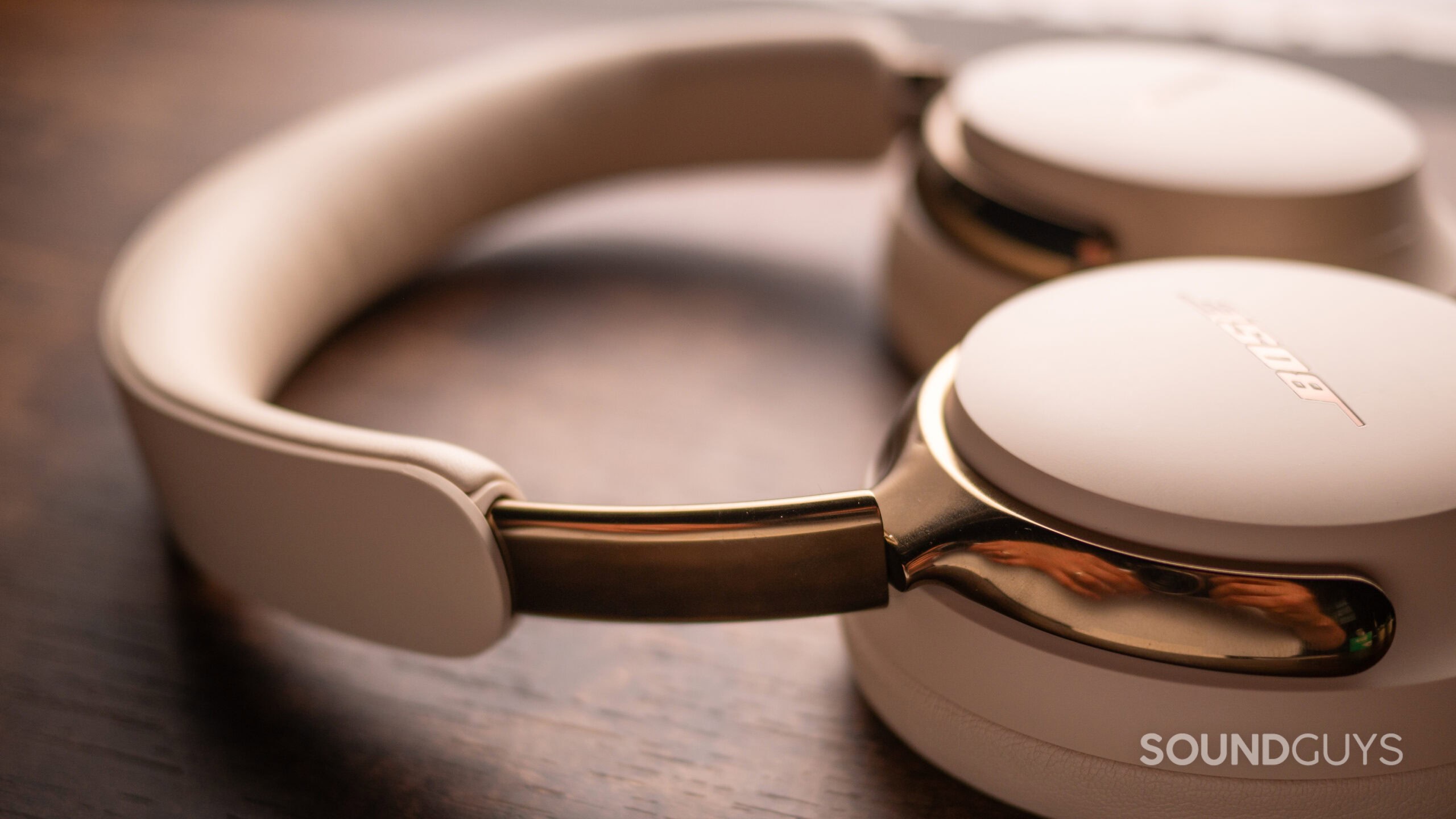
Each ear cup is held in place by a shiny yoke, that can rotate to lay flat, but only in one direction. Though the headphones can fold a little to fit into the carrying case, they can also fold up to minimize their effective volume. The only issue with this is that folding them up defeats the “lay flat to pause” feature the headphones have, which could run down your battery unintentionally if you don’t turn the headphones off first.
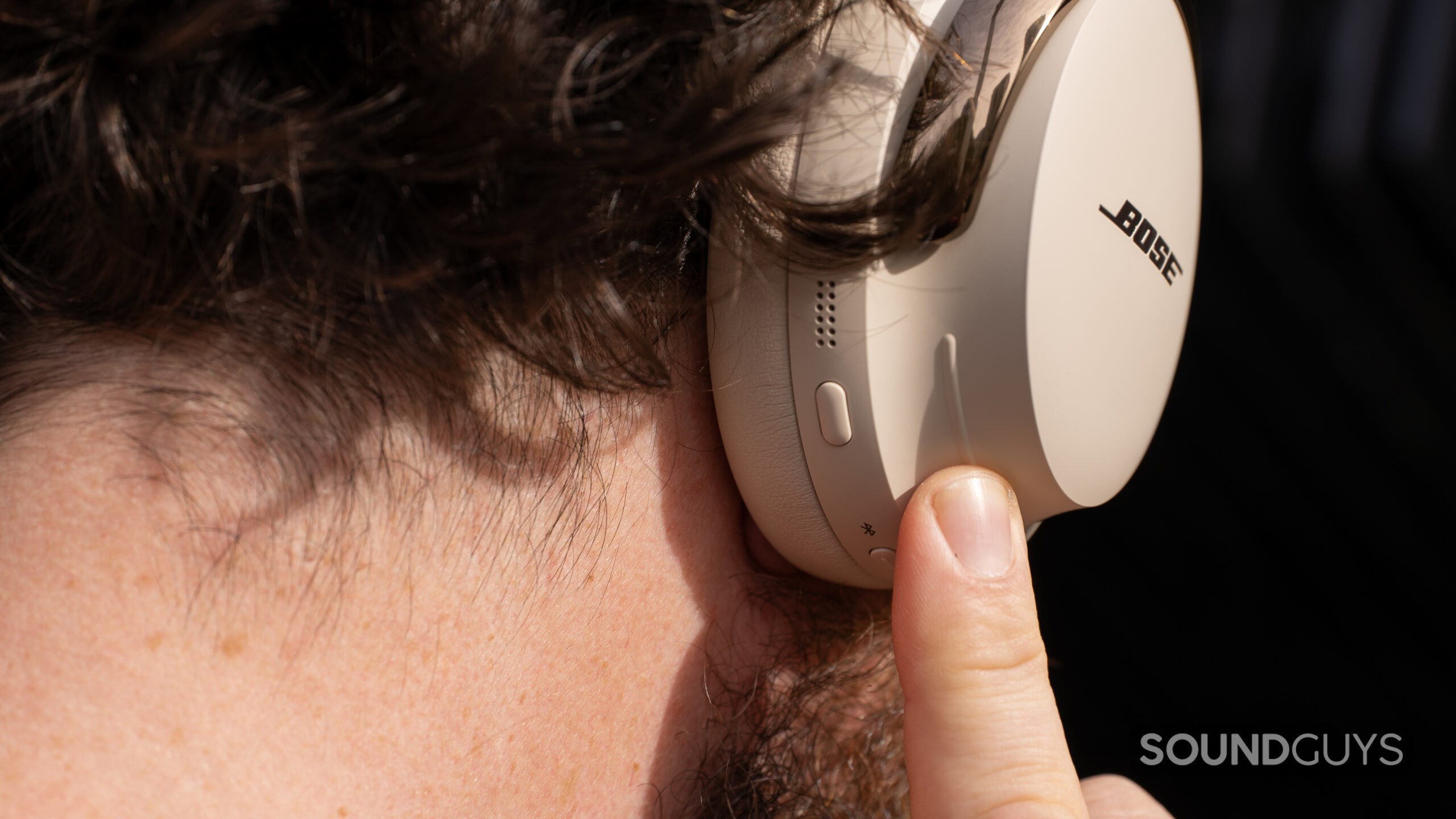
The controls for the product are a little confusing, but capable enough. However, it is a low point for me because it’s less intuitive than it should be at first.
| Action | Multi-function button | Bluetooth / Power button | Volume strip |
|---|---|---|---|
| Action Single tap | Multi-function button Play / pause | Bluetooth / Power button Battery level check | Volume strip N/A |
| Action Double tap | Multi-function button Track forward | Bluetooth / Power button N/A | Volume strip N/A |
| Action Triple tap | Multi-function button Track backward | Bluetooth / Power button N/A | Volume strip N/A |
| Action Long press | Multi-function button ANC mode change | Bluetooth / Power button On / off | Volume strip Shortcut (define in app) |
| Action Swipe | Multi-function button N/A | Bluetooth / Power button N/A | Volume strip Volume up / down |
What are the best features of the Bose QuietComfort Ultra Headphones (2nd Gen.)?
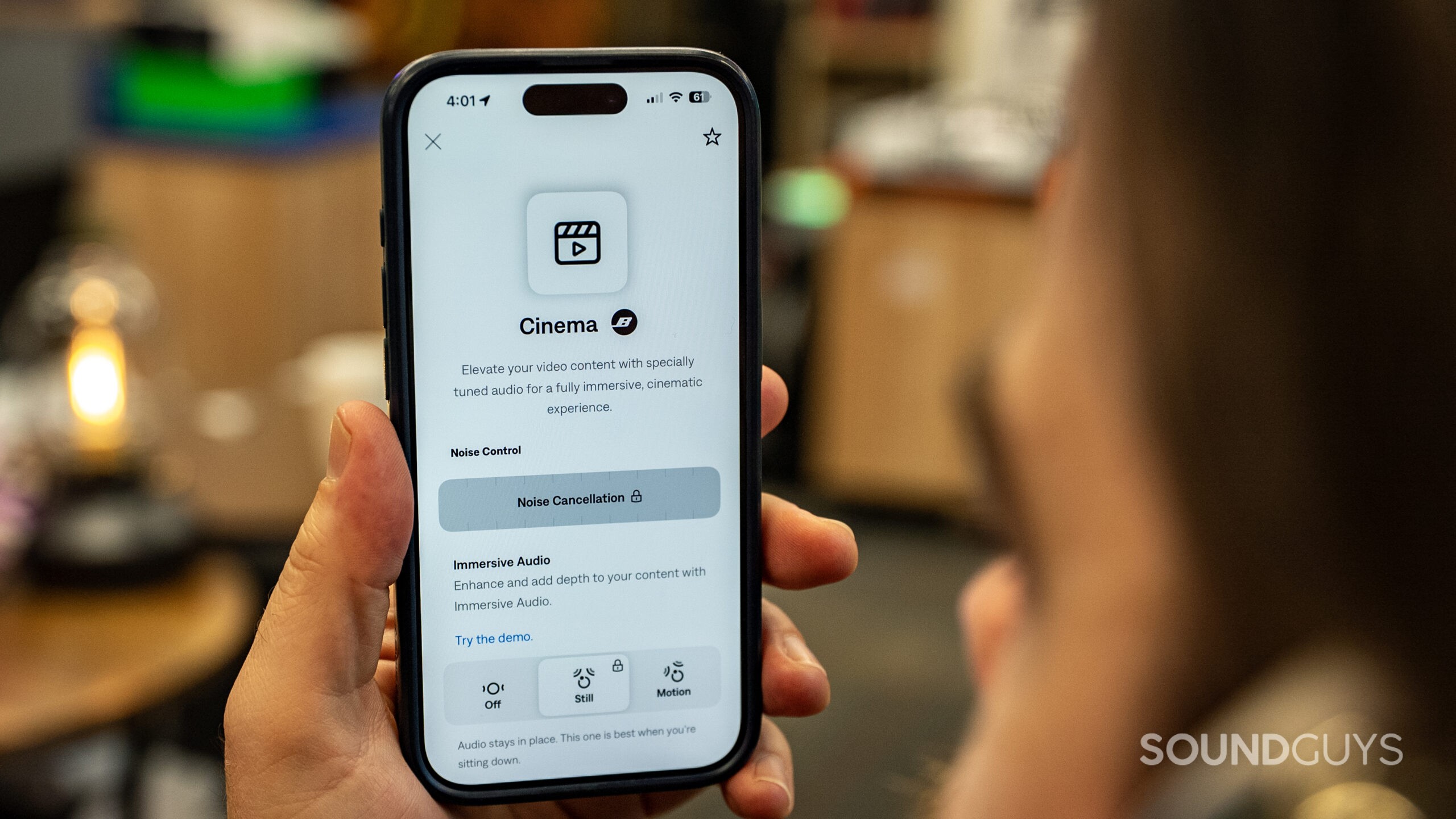
In terms of hardware features, the Bose QuietComfort Ultra Headphones (2nd Gen.) is very much like its predecessor in almost every way. The main differences lie in improved firmware and slight hardware tweaks to modernize the product for a new generation. However, there isn’t anything Earth-shatteringly new here, just a modest upgrade over the previous model.
The Bose QuietComfort Ultra Headphones (2nd Gen.) has added a new spatial mode to directly deal with movie content, which attempts to turn the mix of your cinema content into something that replicates a surround sound experience. I wasn’t much of a fan of this feature, but pretty much all of the immersiveness modes Bose offers miss the mark for me because they attempt to replicate speakers in a room instead of offering a true immersive audio format.
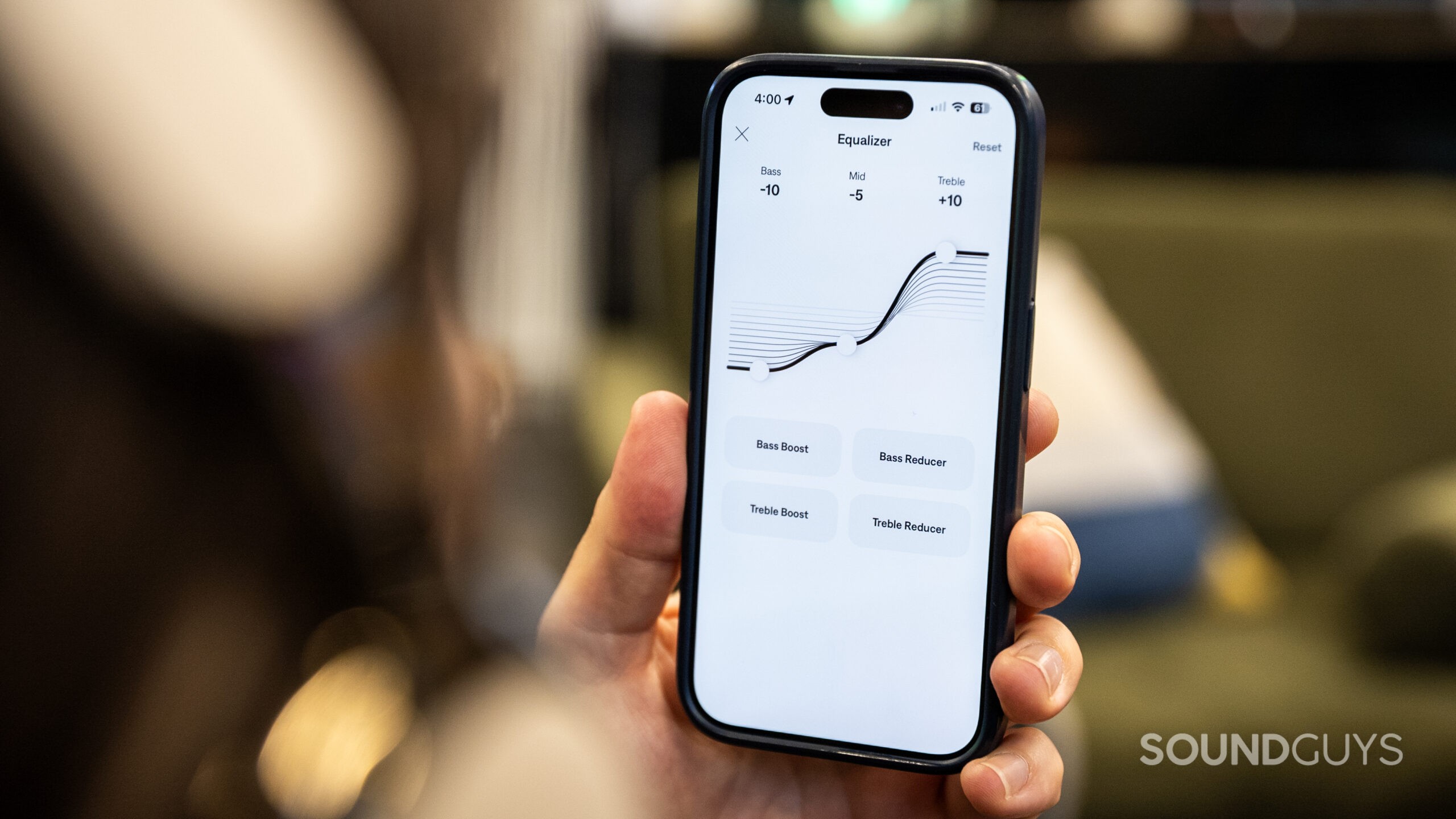
For those looking for greater control over your listening modes and operation, the Bose app will allow you to tweak things like the EQ, immersiveness modes, create presets for yourself and assign them a title, manage connections, and ANC strength. There are also some other goodies locked under differing menus.
How does the Bose QuietComfort Ultra Headphones (2nd Gen.) connect?
The Bose QuietComfort Ultra Headphones (2nd Gen.) is able to connect to devices over USB-C, 3.5mm to 2.5mm TRS cables, and Bluetooth 5.4 via SBC, AAC, and aptX Adaptive family of codecs (aptX-LL, aptX Lossless included). There should not ever be a time where you have the Bose QuietComfort Ultra Headphones (2nd Gen.) in hand and you’re unable to connect to something (provided you carry the appropriate cables with you in the travel case). This reflects a growing reality in the top-end ANC market where each set of headphones requires a high-bitrate codec, standard codecs, and both analog and digital input options. Most headphones will double-up the USB-C port and use a cable to double as the analog option, but Bose has a dedicated analog input on the bottom of the left earcup.
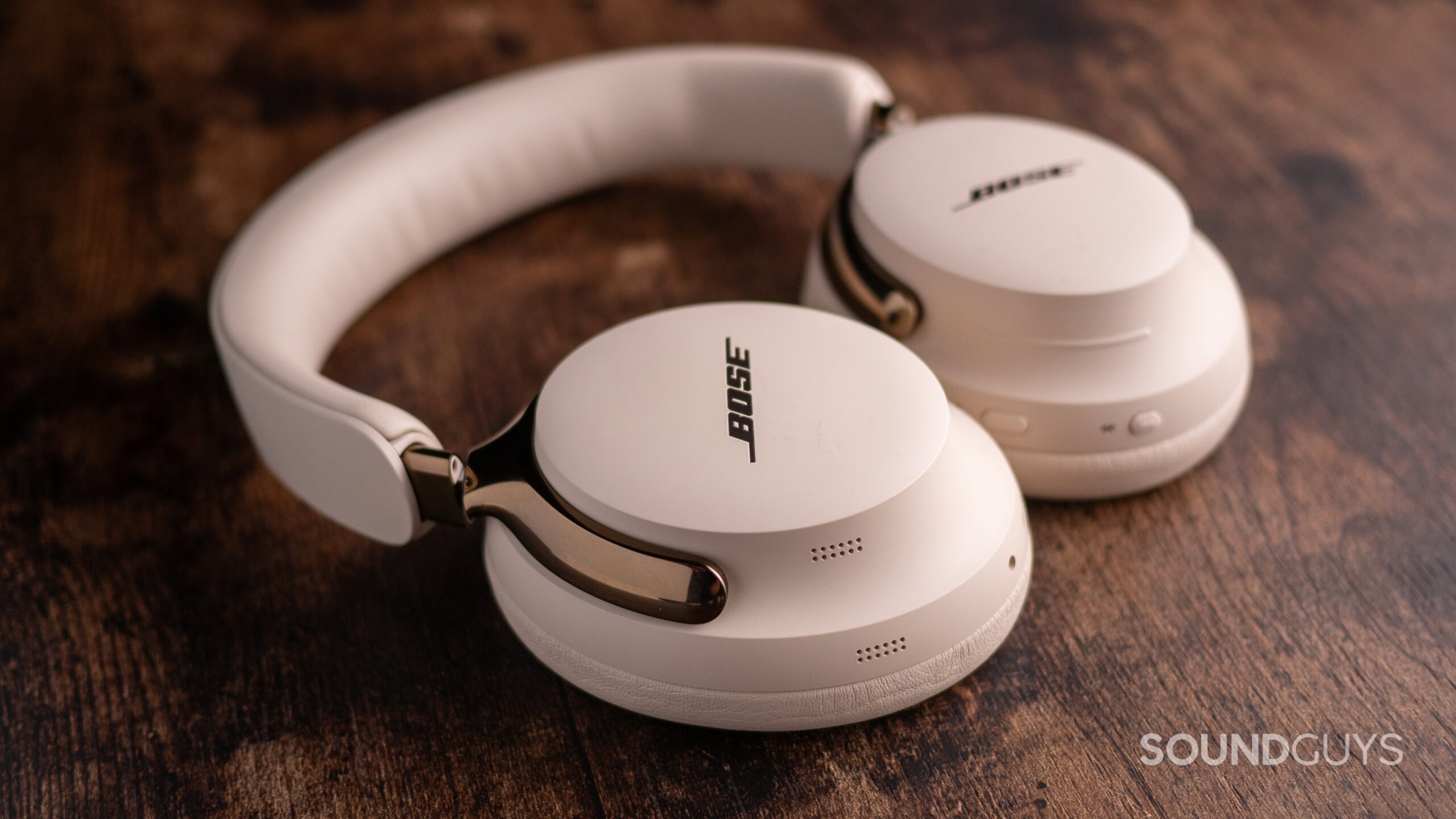
For those of you with Android phones that have a Qualcomm Snapdragon 8 Gen 3 or newer (just not Samsung… go figure), you can connect to your device using the Snapdragon Sound platform, which offers the best performance of the aptX Adaptive family of codecs. This is why the Bose QuietComfort Ultra Headphones (2nd Gen.) can be marketed to offer high-bitrate listening, as it does — just under these specific circumstances. These headphones will not support XPAN in the future, however. You can also get lossless listening over USB-C, provided your source device also supports this. Just connect your headphones to your source with a compatible (actually uses all the pins in the connector) USB-C cable, and the headphones will swap sources once the device you’re connected to starts playing audio.
If fast pair doesn’t work for you, the headphones are pretty to put into pairing mode and connect to your source manually; it just takes a few steps.
- Put the headphones on your head, fit comfortably.
- Turn the headphones on with the Bluetooth button, holding it down until after both the cello chord sounds, and the pairing prompt is read.
- Open your device’s Bluetooth menu. Ensure that it’s on.
- Hit “scan” and locate the Bose QuietComfort Ultra Headphones (2nd Gen.) in the list of available devices.
- Tap to connect.
The reason you have to do things this way is that the CustomTune tech that uses a tone to calibrate the headphones plays at startup, so you should already be wearing the headphones for the system to work properly. There currently is not a way to re-take the tone after you’ve been listening a while, unlike the Bose QuietComfort Ultra Earbuds (2nd Gen).
How long does the Bose QuietComfort Ultra Headphones (2nd Gen.)’s battery last?
Like the previous version of headphones that the Bose QuietComfort Ultra Headphones (2nd Gen.) replaces, Bose claims that these cans can last up to 24 hours on a single charge with ANC on. The company’s estimation was pretty close, as our standardized rundown lasted 27 hours and Unsurprising, given manufacturer claims on battery life tend to be within 10% of our figures. Check back for an exact readout in a few days’ time if you want a more granular estimate.
How well do the Bose QuietComfort Ultra Headphones (2nd Gen.) cancel noise?
Just like the last generation, the Bose QuietComfort Ultra Headphones (2nd Gen.) does a fantastic job of canceling noise, too. There really isn’t much of a difference here, but that’s not inherently a bad thing. ANC headphones are fighting for smaller and smaller improvements, so over time you shouldn’t notice vast differences in gross noise attenuation upon getting a better model. Despite Bose’s claims that they’ve improved ANC, it doesn’t seem to be the case in terms of gross noise attenuation. However, the exact wording was “more precise” ANC, so that may simply mean the unit is better at attacking certain sounds, or predict how your ear will interact with what does get through. We currently do not have a way to show or compare this, but we’ve been experimenting with a few methods over the years. It might be time to dust those off.
Loading chart ...
It’s very easy to get a good seal with the Bose QuietComfort Ultra Headphones (2nd Gen.), so even with the ANC off: the headphones isolate a fair amount of noise already. If you want to hear the world around you, the onboard microphones and processing do a great job of passing your surroundings on through to your ear. However, this mode, too, offers a bit of attenuation in the form of the ActiveSense feature nested in the Aware mode. When toggled, it will blunt unusually loud sounds to avoid annoying distractions or damaging noise levels when you’re trying to hear what’s going on around you.
I will say that this is the first time in my 15 years of reviewing headphones that I’ve ever experienced “eardrum suck” with a set of cans. Whether that’s a testament to the speed of the system’s operation, or that I’m just getting old; I have no idea. But the system does seem to be very effective at killing annoying sounds when you’re out and about.
How do the Bose QuietComfort Ultra Headphones (2nd Gen.) sound?
Much like the first-generation QuietComfort Ultra Headphones, the Bose QuietComfort Ultra Headphones (2nd Gen.) sound decent. Just be sure to get a good fit before turning the headphones on, and the CustomTune tech should handle the rest pretty capably.
Reviewer’s notes
Editor’s note: this review uses a hover-enabled glossary to describe sound quality based on a consensus vocabulary. You can read about it here.
Objective Measurements
Loading chart ...
The default response of the Bose QuietComfort Ultra Headphones (2nd Gen.) depends greatly on how well the CustomTune feature is able to calibrate the headphones to your ears, but in our lab, the Bose QuietComfort Ultra Headphones (2nd Gen.) did fairly well. The sound is characterized by a 3-6dB emphasis of bass over our house curve, which should still be pleasing to most — if a little dark. The highs have good extension up toward 20kHz, and the biggest fault we can find is that the 3kHz to 8kHz region will vary quite a lot. I’ve tested two units so far, and both have rather odd quirks that disappeared after listening for a while.
Once you’ve gotten your “ideal” fit, the response seems to target a modified diffuse field akin to what was tested in the most recent listener preference studies. While it’s not going to be everyone’s cup of tea, this should be pretty inoffensive to most people. However, audiophiles may not gravitate towards this kind of sound because it’s quite a bit more extreme than some of the other target responses the hardcore nerds look for, and the in-app EQ doesn’t offer exact enough measurements to get to where you wanna go.
If you’ve never opened an equalizer before, then a lot of that probably went over your head just now. But the main takeaway here is that the Bose QuietComfort Ultra Headphones (2nd Gen.) is a set of decently-tuned headphones for most people, with a sound that’s bassy enough for those who are into that sort of thing.
in my 15 years of reviewing headphones
Multi-Dimensional Audio Quality Scores (MDAQS)
The chart below shows how the Multi-Dimensional Audio Quality Score (MDAQS) algorithm from HEAD acoustics assesses the sound of the Bose QuietComfort Ultra Headphones (2nd Gen.). The sound quality is rated on a scale from 1.0 (very bad) to 5.0 (excellent).
Hold up! Something’s missing
We’re currently upgrading a few things in the lab, and we’re holding off posting MDAQS results for now. But we have tested the Bose QuietComfort Ultra Headphones (2nd Gen.) — we’re just compiling a little more information before we publish the results to ensure the quality of data meets our editorial standards.
- Timbre (MOS-T) represents how faithfully the headphones reproduce the frequency spectrum and temporal resolution (timing information).
- Distortion (MOS-D) represents non-linearities and added noise: higher scores mean cleaner reproduction.
- Immersiveness (MOS-I) represents perceived source width and positioning: how well virtual sound sources are defined in three-dimensional space.
See here for an explanation of MDAQS, how it works, and how it was developed.
Can you use the Bose QuietComfort Ultra Headphones (2nd Gen.) for phone calls?
As the Bose QuietComfort Ultra Headphones (2nd Gen.) is a set of headphones meant to be your all-day buddy, it’s no surprise that it’s
Bose QuietComfort Ultra Headphones (2nd Gen.) microphone demo (Ideal conditions):
How does the microphone sound to you?
Bose QuietComfort Ultra Headphones (2nd Gen.) microphone demo (Office conditions):
Bose QuietComfort Ultra Headphones (2nd Gen.) microphone demo (Street conditions):
Bose QuietComfort Ultra Headphones (2nd Gen.) microphone demo (Windy conditions):
Bose QuietComfort Ultra Headphones (2nd Gen.) microphone demo (Reverberant space):
Bose typically does a good job handling outside noise, and the Bose QuietComfort Ultra Headphones (2nd Gen.) is no different. Though some incidental noise does make its way through, it’s fairly well mitigated. However, sometimes the audio dips in emphasis to account for noise reduction. This is pretty common with aggressive noise reduction.
Should you buy the Bose QuietComfort Ultra Headphones (2nd Gen.)?
I feel like a broken record saying this, but if you had the original Bose QuietComfort Ultra Headphones in your sights, you won’t be disappointed by grabbing the latest-and-greatest Bose QuietComfort Ultra Headphones (2nd Gen.). There’s not a ton that’s different between generations, but the headphones add a few things here and there that make the $449.99 price tag easier to swallow. It’s especially interesting that Bose jumped onto the USB-C audio train, leaving Sony as the odd manufacturer out in the top-tier ANC headphone game.
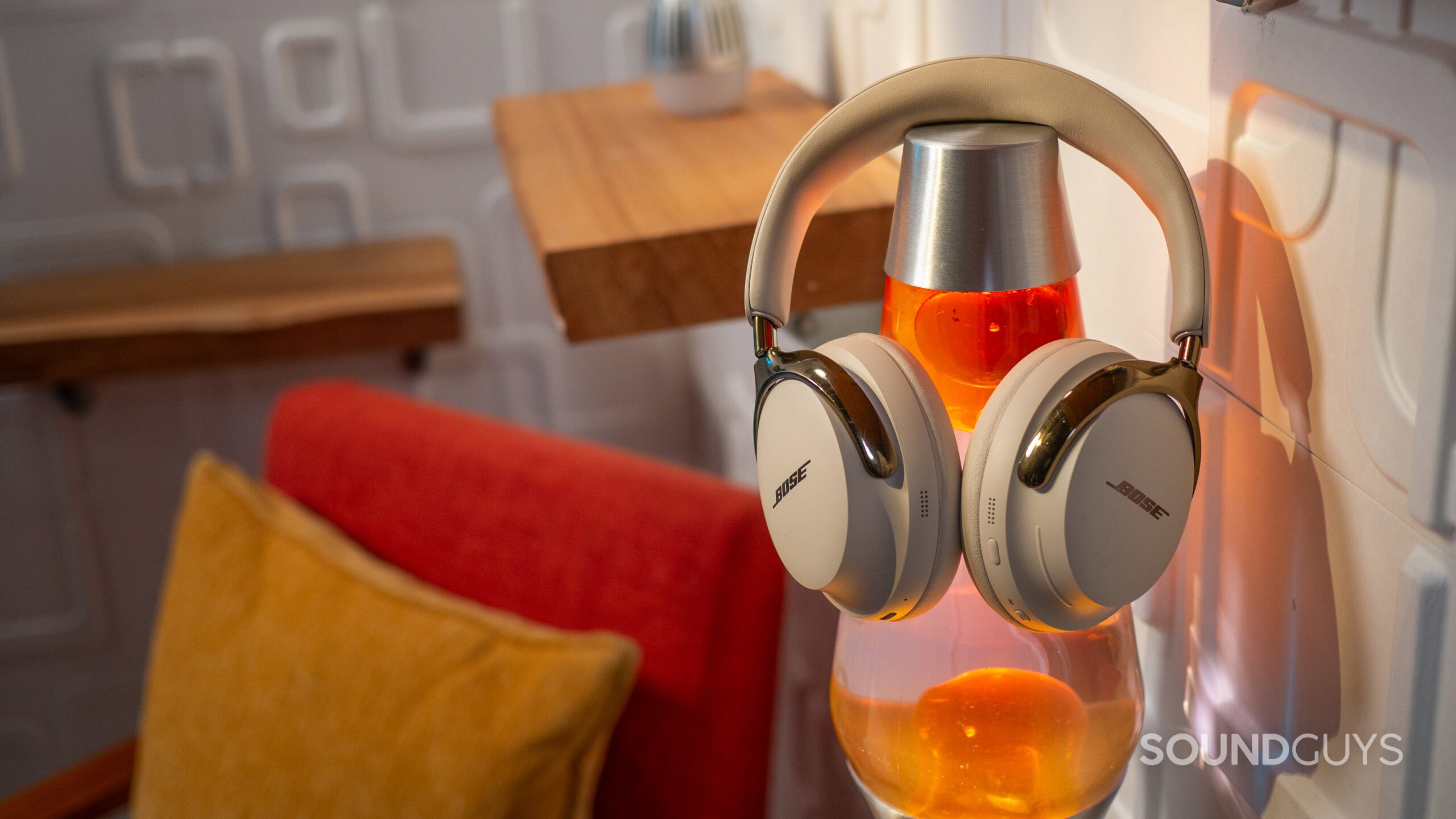
Though cynically it may seem as though refreshing an existing model with a few tweaks is nothing more than an excuse to keep a high price, the ANC headphones landscape is nothing like it was when the original QuietComfort Ultra Headphones launched. Now, these are priced right in line with the Sony WH-1000XM6, and less expensive than the now-ancient Apple AirPods Max. The halo Bose headphones are no longer the “reach” product, but the true competitor to the most popular headsets in the category. And that’s worth considering if you’re in the market for headphones in 2025.
These headphones will make a lot of people happy.
What should you get instead of the Bose QuietComfort Ultra Headphones (2nd Gen.)?
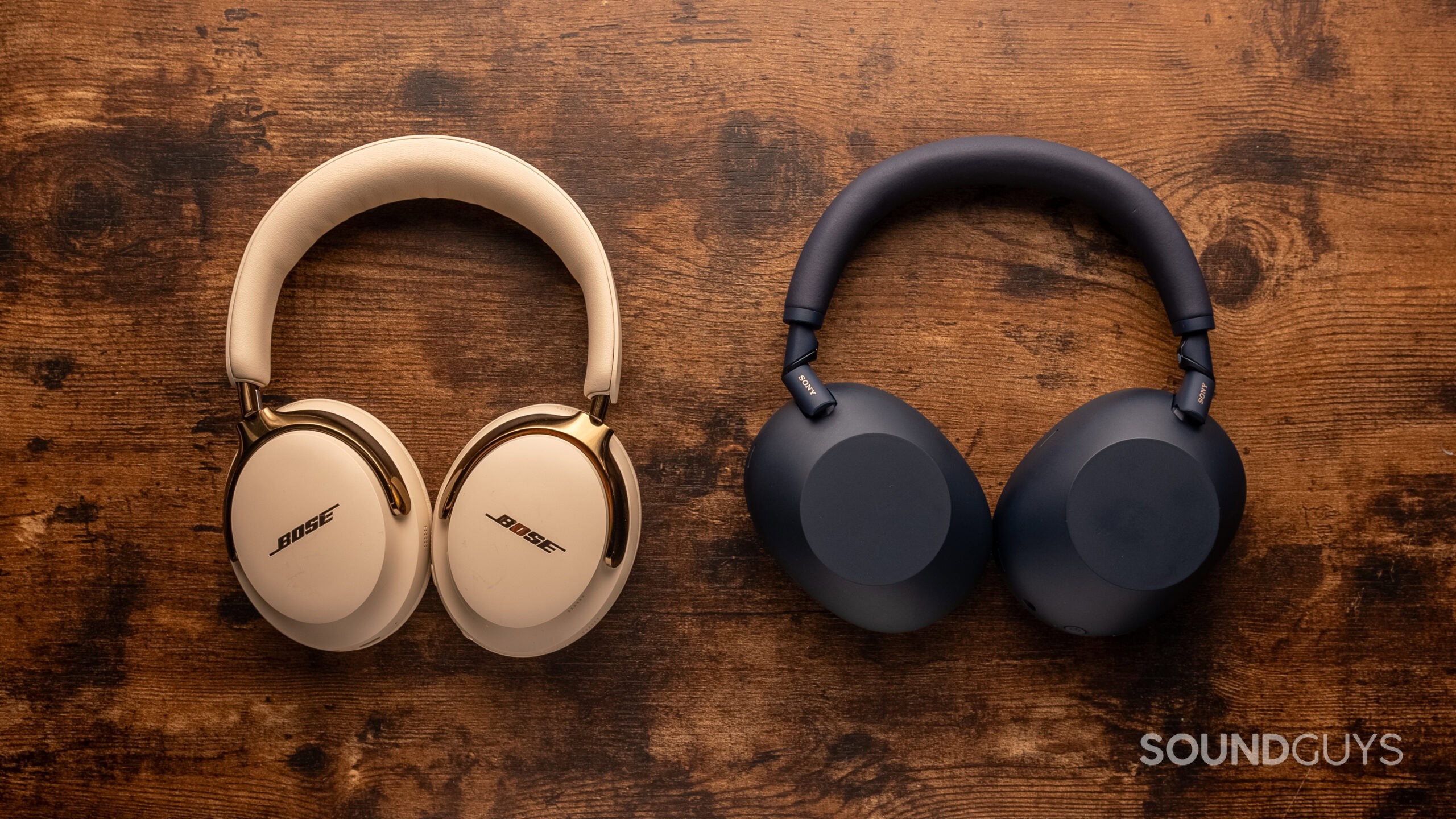
This is a tough one, because the kind of person looking to spend almost $450 on ANC headphones will have a very short list of competitors that will actually satisfy them. To wit, anyone who can’t budge much on price will be looking at the Sony WH-1000XM6 ($448 at Amazon), JBL Tour One M3 ($449.95 at Amazon), Bowers & Wilkins PX7 S3 ($449 at Amazon), older Bose QuietComfort Ultra Headphones ($429 at Amazon), Bose QuietComfort Headphones ($349 at Amazon), and the Sony ULT WEAR ($199.99 at Amazon). Among these, the WH-1000XM6 is probably going to be the Bose QuietComfort Ultra Headphones (2nd Gen.)’s closest rival, as those headphones offer stellar performance and features with the main differences between the two coming down to mass, customizability, and connectivity. Bose has Sony beat on the first and last of those, while Sony mops the floor with the QuietComfort Ultra Headphones (2nd Gen.) in customizing your performance.
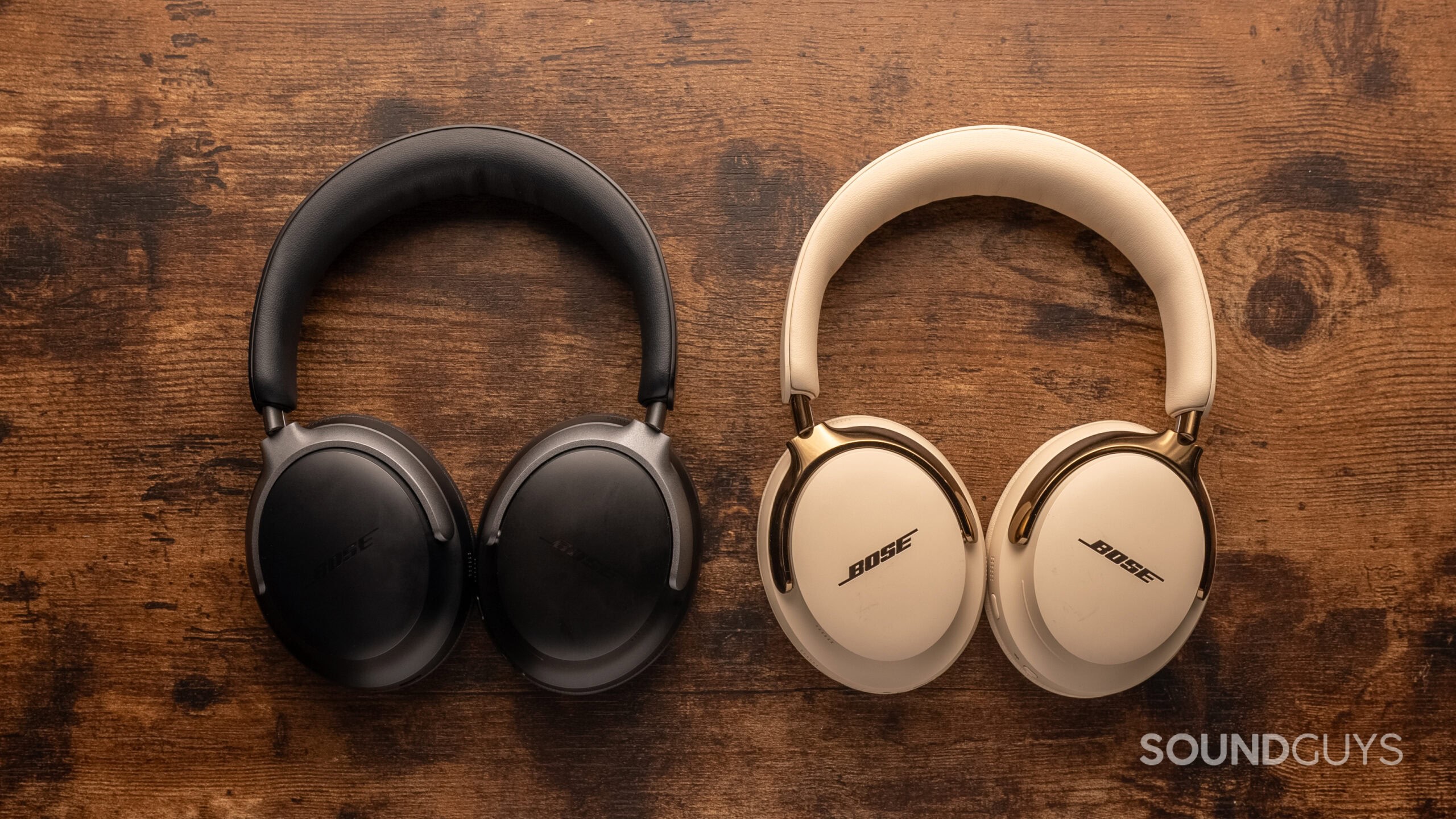
If you’re not looking for massive headphones like the WH-1000XM6, you could also give the Bowers & Wilkins PX7 S3 a try. I quite liked these cans even if they don’t have the same exact array of high-end features Bose has like Snapdragon Sound. The PX7 S3 performs well, has a lot of the standard niceties du jour, and goes toe-to-toe with the other flagships where it counts at the same price.
Finally, those looking to save a little money will probably want to give older Bose headphones a look, as those tend to perform very similarly to each other. However, only the Bose QuietComfort Ultra Headphones (2nd Gen.) has the USB-C digital audio connectivity. If that matters to you, then the JBL Tour One M3 can connect to just about anything analog or digital (and also broadcast over Auracast via an accessory). If USB-C isn’t important to you, then the Sony ULT WEAR is a decent blend of price and performance.
Bose QuietComfort Ultra Headphones (2nd Gen.) FAQs
No. As these headphones do not have any sort of moisture resistance, we can't recommend any activity that would risk water damage.
No. Not even water-resistant.
Yes.
Yes. However, with iOS devices, you will be limited to SBC and AAC — and therefore unable to take advantage of aptX Adaptive.
Yes. You can manage your paired devices in the Bose app.
Yes. You can either charge and listen wirelessly, or you can listen wired via USB-C or 3.5mm TRS.
Yes. You can hear the samples of which in our review.
Not quite.
Yes. It also works to mitigate loud sounds dominating your conversations by blunting intense noise while transparency mode is active.
Provided you can connect to your source wired, or over AAC/aptX, you should be fine for gaming. Just be sure that your device is compatible with the headphones.
Yes. You can use the included 3.5mm to 2.5mm TRS cable, or you can use any USB-C cable that can carry data to listen to a lossless data stream of your music.
In theory, but you'll have to find a vendor for replacements that work first.
Yes. If your TV does not support Bluetooth, you may want to buy a transmitter to prevent the need for extremely long wires, however.
Yes. Allegedly a 15-minute charge should net you about 2.5hours listening time.
Thank you for being part of our community. Read our Comment Policy before posting.